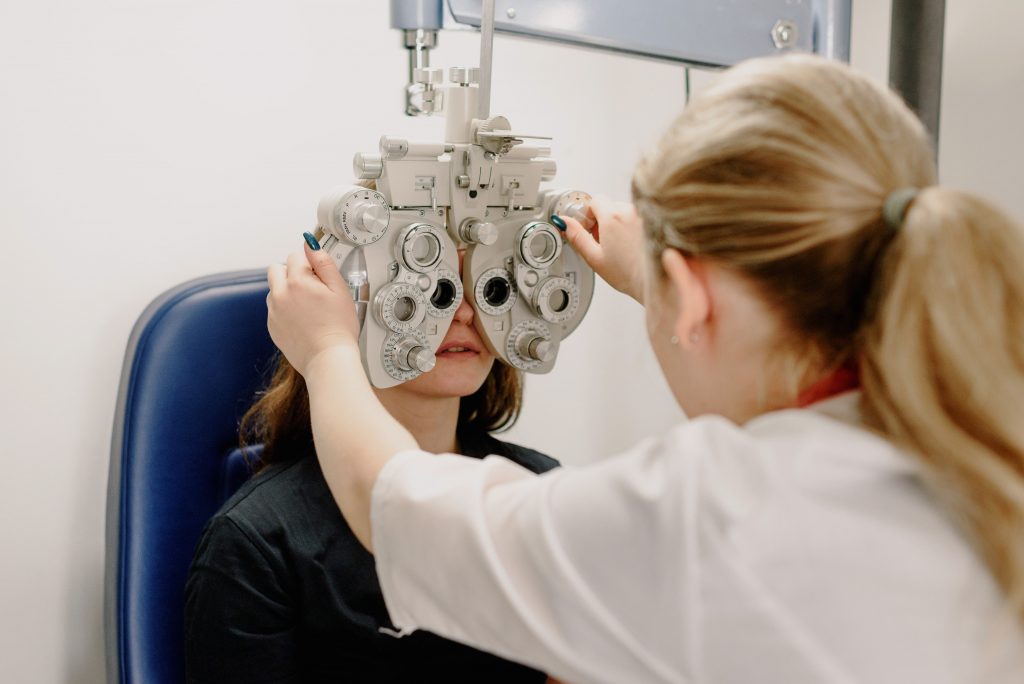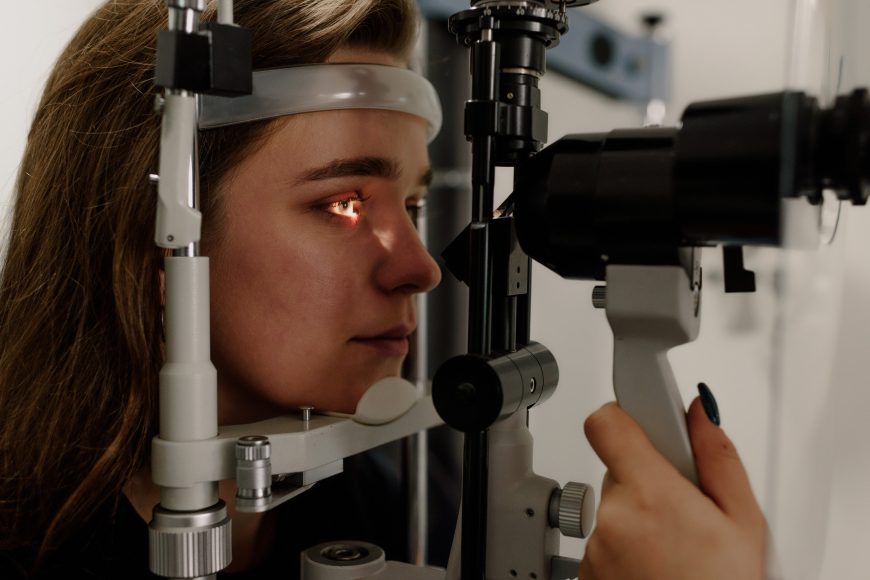An eye examination is a series of tests performed to assess vision and ability to focus on and discern objects. It also includes other tests and examinations pertaining to the eyes. Eye examinations are primarily performed by an optometrist, ophthalmologist, orthoptist, or an optician. Health care professionals often recommend that all people should have periodic and thorough eye examinations as part of routine primary care, especially since many eye diseases are asymptomatic.
Eye examinations may detect potentially treatable blinding eye diseases, ocular manifestations of systemic disease, or signs of tumours or other anomalies of the brain.
A full eye examination consists of an external examination, followed by specific tests for visual acuity, pupil function, extraocular muscle motility, visual fields, intraocular pressure and ophthalmoscopy through a dilated pupil.
A minimal eye examination consists of tests for visual acuity, pupil function, and extraocular muscle motility, as well as direct ophthalmoscopy through an undilated pupil.
Οur Process
Visual acuity is the eyes ability to detect fine details and is the quantitative measure of the eye’s ability to see an in-focus image at a certain distance. The standard definition of normal visual acuity (20/20 or 6/6 vision) is the ability to resolve a spatial pattern separated by a visual angle of one minute of arc. The terms 20/20 and 6/6 are derived from standardized sized objects that can be seen by a “person of normal vision” at the specified distance. For example, if one can see at a distance of 20 ft an object that normally can be seen at 20 ft, then one has 20/20 vision. If one can see at 20 ft what a normal person can see at 40 ft, then one has 20/40 vision. Put another way, suppose you have trouble seeing objects at a distance and you can only see out to 20 ft what a person with normal vision can see out to 200 feet, then you have 20/200 vision. The 6/6 terminology is used in countries using the metric system, and that represents the distance in metres.
- Design, implementation, application and evaluation of financial instruments.
- Fund management for the implementation of financial instruments.
- Consulting services for the design, support, funding and implementation of Concession projects or PPPs.
- Independent Expert Review of Investment Plans.
- Design and monitoring of Business Plans and Feasibility Studies.
In physics, “refraction” is the mechanism that bends the path of light as it passes from one medium to another, as when it passes from the air through the parts of the eye. In an eye exam, the term refraction is the determination of the ideal correction of refractive error. Refractive error is an optical abnormality in which the shape of the eye fails to bring light into sharp focus on the retina, resulting in blurred or distorted vision. Examples of refractive error are myopia, hyperopia, presbyopia and astigmatism. A refraction procedure consists of two parts: objective and subjective.
Ocular motility should always be tested, especially when patients complain of double vision or physicians suspect neurologic disease. First, the doctor should visually assess the eyes for deviations that could result from strabismus, extraocular muscle dysfunction, or palsy of the cranial nerves innervating the extraocular muscles. Saccades are assessed by having the patient move his or her eye quickly to a target at the far right, left, top and bottom. This tests for saccadic dysfunction whereupon poor ability of the eyes to “jump” from one place to another may impinge on reading ability and other skills, whereby the eyes are required to fixate and follow a desired object.

External examination of eyes consists of inspection of the eyelids, surrounding tissues and palpebral fissure. Palpation of the orbital rim may also be desirable, depending on the presenting signs and symptoms. The conjunctiva and sclera can be inspected by having the individual look up, and shining a light while retracting the upper or lower eyelid. The position of the eyelids are checked for abnormalities such as ptosis which is an asymmetry between eyelid positions.
Pricing
From only $100
Based on how quickly you would like your scan, and the location.
Locations
Locations across the country
Based on how quickly you would like your scan, and the location.
Appointments
Same day appointments
Based on how quickly you would like your scan, and the location.
Appointments
Refer yourself
Based on how quickly you would like your scan, and the location.


